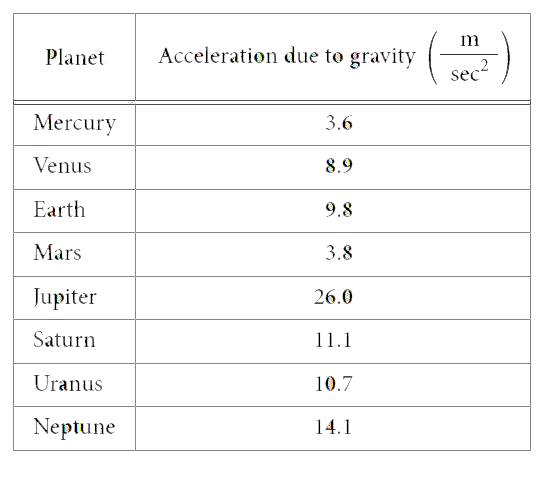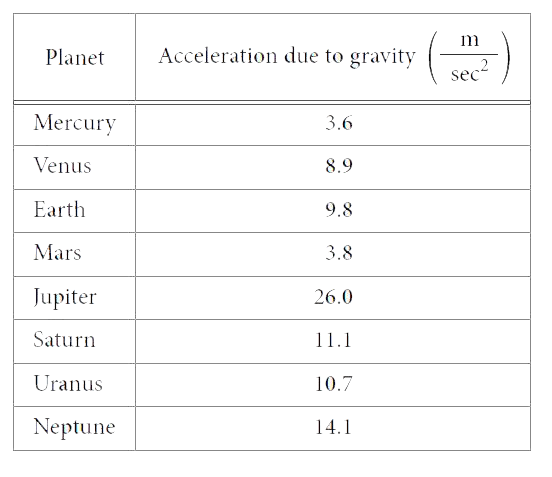The weight of an object lies at the ............
Centre of mass
Centre of buoyancy
Centre of gravity
Geometric centre always
The correct Answer is:C
To solve the question regarding where the weight of an object lies, we will analyze the options provided and clarify the concepts involved.
1. Understanding Weight and Mass:
- Weight is the force exerted by gravity on an object and is dependent on the object's mass and the acceleration due to gravity. It is calculated using the formula:
Weight(W)=Mass(m)×Acceleration due to gravity(g)
2. Identifying Key Terms:
- Center of Mass: This is the point where the mass of an object is considered to be concentrated. It is the average position of all the mass in the object.
- Center of Gravity: This is the point where the total weight of the object can be considered to act. For uniform gravitational fields, the center of gravity coincides with the center of mass.
- Center of Buoyancy: This is the center of mass of the displaced fluid when an object is submerged in a fluid.
- Geometric Center: This is the average position of all points in a shape, which may not correspond to the center of mass or center of gravity.
3. Analyzing the Options:
- Option 1: Center of Mass: This is relevant for mass, not weight.
- Option 2: Center of Buoyancy: This pertains to fluid mechanics and is not relevant to weight.
- Option 3: Center of Gravity: This is where the weight of the object acts, especially in a uniform gravitational field.
- Option 4: Geometric Center: This does not necessarily relate to weight or mass.
4. Conclusion:
- Since the question specifically asks about the weight of an object, the correct answer is Option 3: Center of Gravity. The weight of an object lies at its center of gravity.
Final Answer:
The weight of an object lies at the center of gravity.
---
- Weight is the force exerted by gravity on an object and is dependent on the object's mass and the acceleration due to gravity. It is calculated using the formula:
Weight(W)=Mass(m)×Acceleration due to gravity(g)
- Center of Mass: This is the point where the mass of an object is considered to be concentrated. It is the average position of all the mass in the object.
- Center of Gravity: This is the point where the total weight of the object can be considered to act. For uniform gravitational fields, the center of gravity coincides with the center of mass.
- Center of Buoyancy: This is the center of mass of the displaced fluid when an object is submerged in a fluid.
- Geometric Center: This is the average position of all points in a shape, which may not correspond to the center of mass or center of gravity.
- Option 1: Center of Mass: This is relevant for mass, not weight.
- Option 2: Center of Buoyancy: This pertains to fluid mechanics and is not relevant to weight.
- Option 3: Center of Gravity: This is where the weight of the object acts, especially in a uniform gravitational field.
- Option 4: Geometric Center: This does not necessarily relate to weight or mass.
- Since the question specifically asks about the weight of an object, the correct answer is Option 3: Center of Gravity. The weight of an object lies at its center of gravity.
The weight of an object lies at the center of gravity.
Similar Questions
Knowledge Check

The chart above shows approximate of the acceleration due to gravity in meters per second squared (msec2) for the eight planets in our solar system. The weight of an object on a given planet can be found by using the formula W=mg, where W is the weight of the object measured in newtons, m is the of the object measured in kilograms, and g is the acceleration due to gravity on the planet measured in msec2.
An object on Earth has a weight of 150 newtons. On which planet would the same object have an approximate weight of 170 newtons?AvenusBsaturnCuranusDneptune
The chart above shows approximate of the acceleration due to gravity in meters per second squared (msec2) for the eight planets in our solar system. The weight of an object on a given planet can be found by using the formula W=mg, where W is the weight of the object measured in newtons, m is the of the object measured in kilograms, and g is the acceleration due to gravity on the planet measured in msec2.
What is the weight, in newtons, of an object on Mercury with a mass of 90 kilograms?A25B86C101D324
The weight of an object at the centre of the earth of radius R is
View SolutionThe weight of an object on the surface of the Earth is 40 N. Its weight at a height equal to the radius of the Earth is
View SolutionThe weight of an object in the coal mine, sea level and at the top of the mountain are W1,W2 and W3 respectively, then
View SolutionWith the increase in the weight of an object, the pressure :
View SolutionIf the diameter of the earth becomes two times its present value and its mass remains unchanged then how would the weight of an object on the surface of the earth be affected ?
View SolutionAssertion: Mass is a property of one object alone, whereas weight results from the interaction of two objects.
Reason: The weight of an object is proportional to its mass.
View Solution
